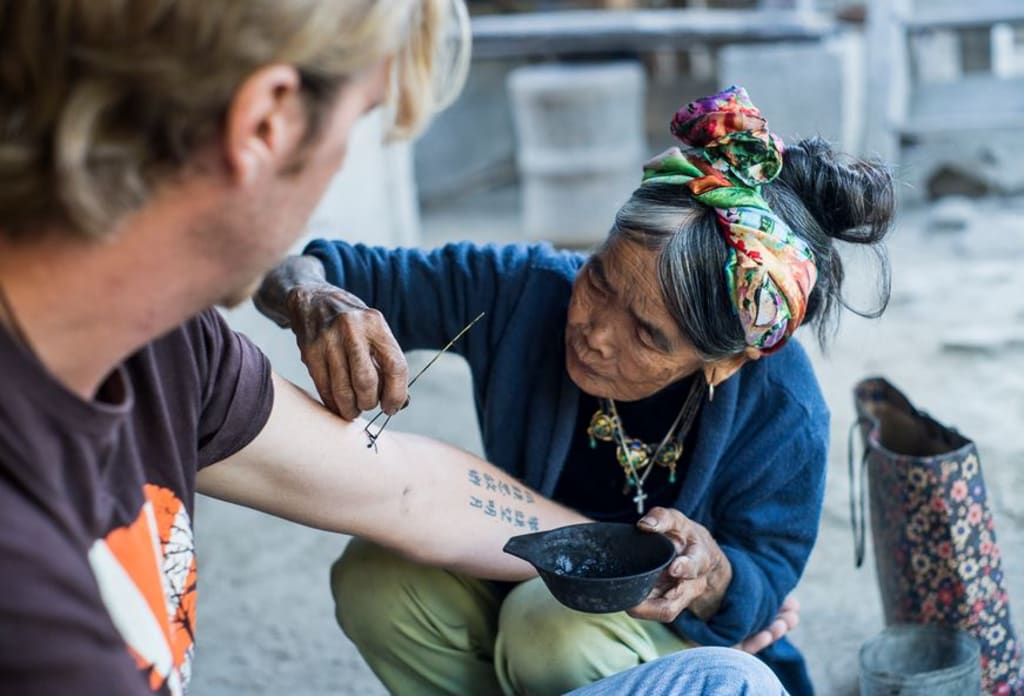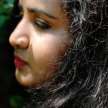Reviving Tradition: The Centenarian Tattoo Artist Preserving Batok Culture
How 106-year-old Whang-Od Oggay Became the Symbol of Batok Tattoos in the Philippines

For centuries, traditional Filipino tattoos called "batok" were a symbol of beauty, wealth, and strength. The practice almost disappeared under the influence of colonization and modernization. Yet, against all odds, a 106-year-old woman, Whang-Od Oggay, has not only kept the art of Batok alive but has also become a global icon of this fading tradition.
A Mountain Village Preserving Tradition
Nestled 3,300 feet above sea level, the village of Buscalan is a remote haven where tradition thrives. The journey to reach this secluded village is a challenging hike, a testament to the dedication of those who seek to experience the art of Batok. Whang-Od Oggay, commonly known as Whang-Od, is the matriarch of this traditional Filipino art form.
With sharp green thorns from pomelo and lemon trees found in her own backyard, Whang-Od fashions needles for her tattoos. She ingeniously inserts these thorns into a bamboo stick to create a tool known as "gissy." To make ink, she scrapes soot from a burnt pot, mixing it with water until it reaches the desired consistency.
Whang-Od received her first tattoo as a teenager, beginning her journey into the art of Batok. A living legend at the age of 106, she has lost count of how many tattoos she has created during her lifetime. Her signature tattoo has become a simple design consisting of three dots, symbolizing her legacy.
The Art of Batok: Symbolism and History
Batok tattoos are a significant part of Kalinga tribal culture in the Cordillera region of the Philippines. Traditionally, these tattoos were adorned by both men and women, and they held diverse meanings.
For young girls, receiving their first tattoo as early as 13 signaled their readiness for marriage. Men earned their tattoos through acts of bravery in headhunting, a practice that was considered a source of pride and honor. Each tattoo told a unique story, reflecting the individual's role, experiences, and aspirations within the community.
However, with the arrival of colonial rule by the United States in the late 19th century, headhunting was banned, and the appeal of Batok tattoos dwindled. Missionaries viewed these traditional tattoos as taboo and encouraged the Kalinga people to cover them.
The Philippines' Journey to Independence
In the wake of the Philippines' struggle for independence and liberation, many indigenous practices faced a steep decline. Western education, particularly English-based schooling, became the norm. The traditional customs that had defined tribal life were gradually replaced by more modern and Westernized practices.
Despite the ever-changing cultural landscape, Whang-Od persevered. She worked tirelessly in rice fields for years while continuing to practice the art of Batok on the side.
Whang-Od's Global Recognition
In 2009, Whang-Od's commitment to preserving Batok caught the attention of the Discovery Channel, which featured her in the series "Tattoo Hunter." The world was introduced to her art, and she began to receive well-deserved recognition for her role in preserving a fading tradition.
In 2023, Whang-Od graced the cover of Vogue Philippines, cementing her status as a cultural icon. Her journey from being a local tattooist to a national treasure exemplifies the transformative power of one individual's dedication.
Buscalan: A Mecca for Tattoo Enthusiasts
Whang-Od's newfound fame led to an influx of tourists traveling to Buscalan, eager to receive the traditional three-dot tattoo or other designs. Hikers embark on journeys lasting up to 15 hours to reach her village, where up to 120 clients can be served in a single weekend.
These tourists patiently sit on Whang-Od's porch to get their tattoos, enduring the pain for the opportunity to experience this cultural heritage. While her eyesight has faded over the years, Whang-Od's signature three-dot tattoo remains a highly sought-after design.
Today, her grandnieces, Ely Young and Grace, assist with the more intricate tattoo designs, allowing her to focus on her signature style.
Passing the Tradition: A New Generation of Batok Artists
Whang-Od's legacy extends beyond her remarkable age. The once-male-dominated tradition of Batok has now found a place for women, thanks to her influence. Her father encouraged her to defy tradition and learn the art, which she did with unwavering determination.
In Buscalan, women now predominate as Batok artists. Additionally, tourists are not only seeking to get inked by Whang-Od but are also driven to learn and continue the tradition themselves.
Batok Beyond Buscalan: A Global Connection
The art of Batok is not confined to the boundaries of Buscalan. Filipino-American tattoo artist El Fesin traveled to the village in 2007 to connect with his roots. Whang-Od, recognizing his commitment, chose a design that signified their shared heritage.
El Fesin has since been running a tattoo shop in California, specializing in tribal tattoos and advocating for the preservation of Filipino indigenous traditions. He understands the importance of using traditional tools to connect with one's ancestry and culture.
Mark of the Four Waves: Reviving Cultural Identity
In 1998, El Fesin co-founded the Mark of the Four Waves, an organization dedicated to helping Filipinos and other indigenous groups reconnect with their heritage through tattoos. They host social and educational events, nurturing the appreciation for traditional Filipino art.
A Symbol of Empowerment and Identity
Batok tattoos are more than just markings on the skin; they symbolize empowerment and identity. For many, these tattoos have become a source of self-acceptance, fostering pride in their cultural heritage. As the tattoos regain their popularity among locals and tourists alike, they play an essential role in preserving the Philippines' rich history and cultural identity.
The Legacy Lives On
Whang-Od and the artists in Buscalan are no longer isolated. The preservation of the Batok tradition has now taken root in other parts of the Philippines. Over 150 artists in the village carry forward this cultural heritage.
As the art of Batok continues to transcend generations, it stands as a testament to the resilience and determination of the Kalinga people and their iconic artist, Whang-Od Oggay. Whang-Od's legacy has not only preserved Batok but has also revived a sense of cultural identity and pride among the Filipino people.
About the Creator
Enjoyed the story? Support the Creator.
Subscribe for free to receive all their stories in your feed. You could also pledge your support or give them a one-off tip, letting them know you appreciate their work.






Comments
There are no comments for this story
Be the first to respond and start the conversation.